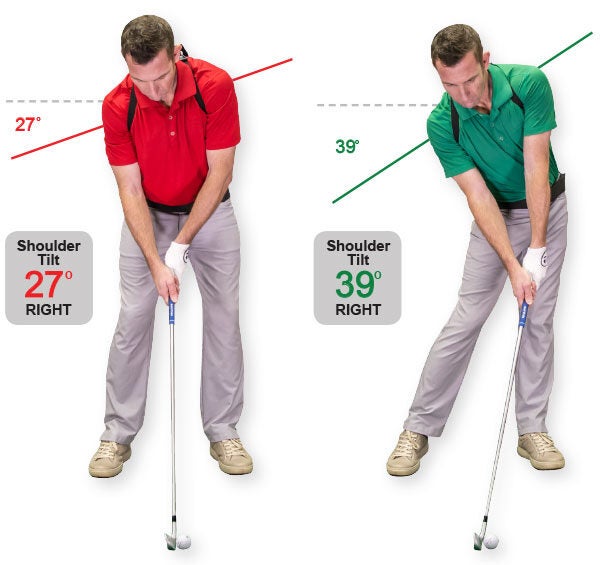
Welcome to Play Smart, a game-improvement column that drops every Monday, Wednesday and Friday from Game Improvement Editor Luke Kerr-Dineen to help you play smarter, better golf.
Shoulder tilt — it’s super important, but too many golfers don’t quite realize that. Last week, we paired with GOLF Top 100 Teacher and GOLFTEC’s VP of Instruction Nick Clearwater to explain why it’s such a key on the backswing, and now we’re following up with another explainer on how it works on the downswing. Nick has studied the effects of shoulder tilt in GOLFTEC students’ swings for years, and the evidence is in.
“The amount your shoulders are tilted at impact is one of the biggest separators between higher and lower handicaps,” Clearwater says.
Here’s why — and how you can get more of it in your swing.
All of our market picks are independently selected and curated by the editorial team. If you buy a linked product, GOLF.COM may earn a fee. Pricing may vary.
GOLF.com Readers Save 15%
Fill out this form to book a swing evaluation or club fitting and begin your journey to better golf.
1. The best golfers have their shoulders the most tilted
What is downswing shoulder tilt? Well, if you’ve ever taken a good look at a pro’s golf swing through impact, you’ve seen it: their weight is forward, but their torso is tilted away from the target, with their lead shoulder above their trail shoulder.
Deej through impact pic.twitter.com/T4uiQxDPst
— LKD (@LukeKerrDineen) August 17, 2021
That is shoulder tilt, the amount your shoulders are tilted relative to the ground, and it’s really important. That combination helps the club swing from in-to-out, and allows you to hit up on the golf ball.
“The more you’re tilted away from the target, the faster the club can go up,” he said. “It’s also a way of controlling your angle of attack, by tilting yourself away from the target. Without that rightward tilt.”
Keeping your shoulders tilted like this creates a “slingshot” effect between your body and the club.

2. Higher handicaps keep their should too level
Recreational golfers tend to do the opposite: their torso and lower body are more in a straight line (usually behind the ball), and their shoulders are more level. It leads to all sorts of issues, from chunked shots to an out-to-in swing path that results in ugly pulls and slices.
“The more your shoulders are level, or even tilted toward the left, the easier it is to internally rotate my shoulder and push it towards the left,” Clearwater says.
All of which brings us to the golden number we promised in the headline: 39 degrees. That’s a good target to shoot for when it comes to tilting your shoulders at impact. Some players do it more — it’s a hard to overdo this move — and Clearwater suggests feeling like your trail arm stays bent and more behind you if you’re looking for a swing thought to help with this.
In conclusion, tilt your shoulders more; your driver will thank you.








